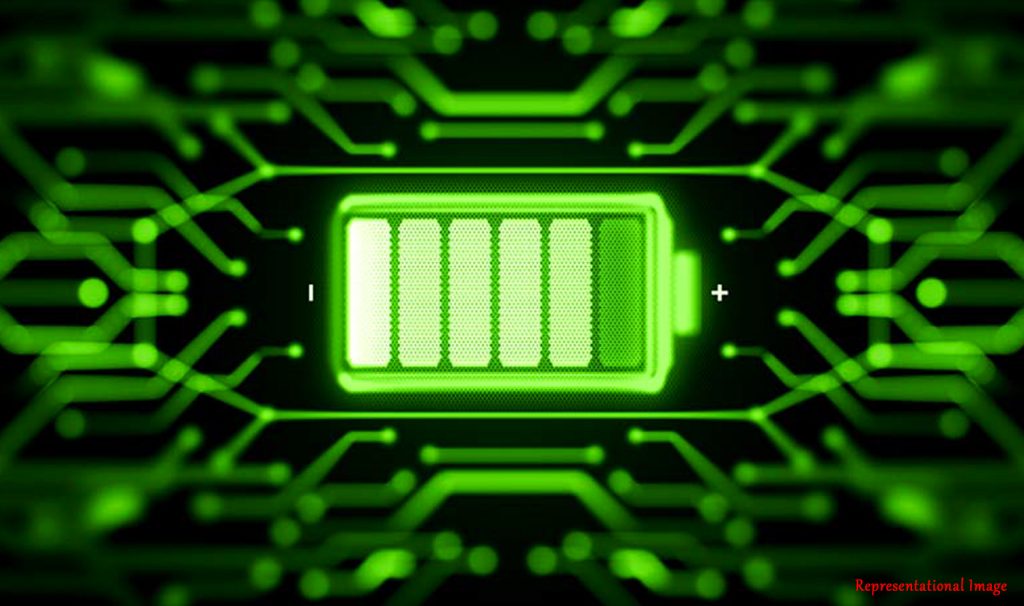
It is heartening to see the replacement of fossil fuel-based energy systems by renewable alternatives like solar and wind. In order for these energy systems to be effective, a proper grid energy storage system is required to store the harvested energy.
Of the various energy storage systems (ESSs), redox flow batteries (RFBs) are the most popular as they are easy to design, have quick responses, are scalable, and have decoupled energy and power attributes.
Basically, redox flow batteries have two redox active species, one called an anolyte, and the other called a catholyte, dissolved in a solution called an electrolyte to store energy.
Conventional aqueous-based flow batteries use electrolytes such as hydrochloric acid and sulfuric acid. But these cause corrosion, and the metals used as anolytes and catholytes tend to be toxic.
Thus, a new type of redox flow battery called non-aqueous all-organic redox flow battery (NORFB) has gained a lot of interest as it is known to be environment friendly and has a higher energy density as compared to aqueous batteries.
One of the most important components of a redox flow battery is the redox-active organic molecule (ROM). The design and synthesis of these molecules to have good solubility, desirable voltage, and reversible cycling in organic solvents is very important.
But the usual ROMs chosen have low solubility and poor mass and charge transfer kinetics which results in low-current density and low energy density.
In this paper, the authors – Ms. Priya Vallayil, Prof. Sethuraman Sankararaman, and Prof. Kothandaraman Ramanujam from the Department of Chemistry, Indian Institute of Technology (IIT) Madras, Chennai, India, have for the first time used pyrylium salt for the non-aqueous all-organic redox flow battery (NORFB).
Pyrylium salts find use in the various fields of synthetic organic chemistry as photocatalysts for the synthesis of small molecules and in photopolymerizations. They can be used as a precursor for synthesizing other heterocycles like Katritzky salts by reaction with primary amines. They also find applications in dye lasers, sensors, nonlinear optical (NLO) materials, phototherapeutic agents, etc.
To the best of the authors’ knowledge, this is the first time pyrylium salt has been used for energy storage in the NORFB system.
In this study, 2, 4, 6-triphenylpyrylium tetrafluoroborate (TPT) was used as the anolyte, and N-decylphenothiazine (DPTZ) was used as the catholyte to construct the NORFB.
It was found that TPT offers high solubility, reversibility, and improved stability, which are prime requirements for redox flow batteries to achieve high energy density and cyclability. The 2nd, 4th, and 6th positions of pyrylium salt serve as a versatile platform for tailoring the electrochemical activity and stability of the pyrylium salts. It was concluded that pyrylium salts can be used as a potential anolyte for non-aqueous flow battery applications.
Dr. P. Ragupathy, Associate Professor and Principal Scientist, Redox Flow Battery Research Group, Electrochemical Power Sources Division, CSIR-Central Electrochemical Research Institute, Karaikudi, Tamil Nadu, India, gave the following observations on this paper, thus confirming its importance with the following comments: “Prof. Kothandaraman Ramanujam’s group at IIT Madras is a forerunner in developing clean and sustainable large-scale energy storage technologies and Prof. S Sankararaman’s group is known for developing new organic scaffolds for energy storage. Their team at IIT Madras aspires to demonstrate a non-aqueous organic redox flow battery (NORFB) using a novel class of redox-active organic anode (anolyte) material called pyrylium salts. Wider electrochemical potential window (> 3V) of non-aqueous solvents, use of low-cost, earth-abundant redox-active organic materials (ROMs), less corrosive electrolytes, etc. attract NORFBs to be a potential choice for grid energy storage applications. In this work, 2,4,6-triphenylpyrylium tetrafluoroborate (TPT) is used as the anolyte and coupled with N-decyl phenothiazine, a prototype NORFB was demonstrated for the first time which operates at a high current density (for organic non-aqueous medium) of 40 mA cm-2 and offers 60 stable GCD cycles with an average coulombic efficiency of 97%. TPT offers high solubility, reversibility, and improved stability which are prime requirements for RFB to achieve high energy density and cyclability. They have demonstrated that by varying substituents at the 2,4 and 6th positions of pyrylium salts, it is easy to tune ROMs’ redox behaviour and stability, thus providing a versatile platform to explore more similar compounds in this field.”
Article by Akshay Anantharaman
Click here for the original link to the paper











